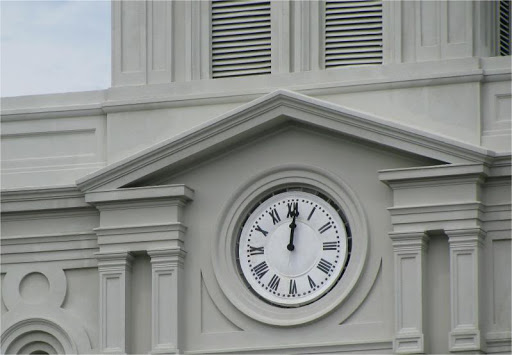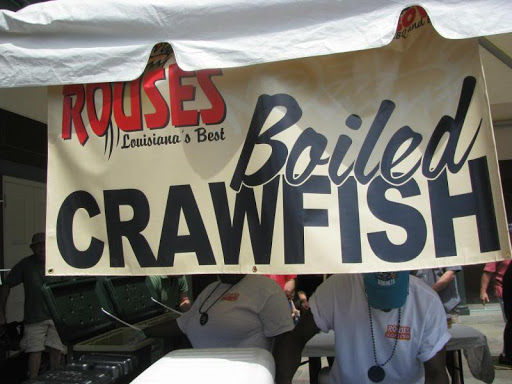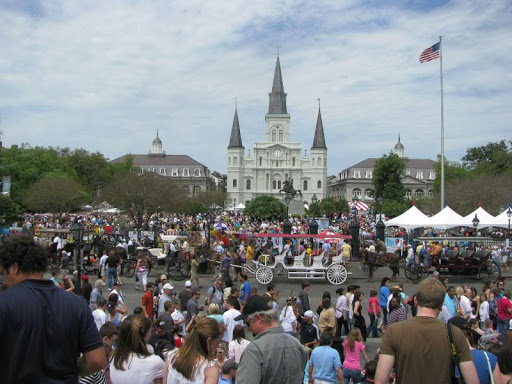New Orleans Journal
Gathering to Watch Their City’s Star Turn
By CAMPBELL ROBERTSON
Published: April 12, 2010
NEW ORLEANS — In the family center of the Charbonnet-Labat-Glapion Funeral Home on St. Philip Street, the local historic neighborhood association came together for a meeting on Sunday night. After a few mentions of “beautification issues,” they got down to the matter at hand: in a few minutes’ time, the city’s Tremé neighborhood, unknown to most and mispronounced by many, was about to become very, very famous.
The Ernie K-Doe Mother-in-Law Lounge was just one spot where people met on Sunday to watch the first episode of “Treme.”
“Uncle” Lionel Batiste, a musician and Tremé resident, on the set last month in Central City with the actor Wendell Pierce.
The viewing party at the funeral home — red carpet attire requested — was one of countless all over town on Sunday night for the first episode of the HBO series “Treme,” a narrative of the city that starts in the months after Hurricane Katrina and one of the mostly widely anticipated shows here in years. (The show’s name, unlike the neighborhood’s, is unaccented; both are pronounced treh-MAY.)
People crowded in to watch at bars, like the Ernie K-Doe Mother-in-Law Lounge and Buffa’s. Others horse-traded with friends who have HBO: I’ll cook dinner if I can watch at your place.
When the premiere ended and the lights went up at the funeral home, the floor was open for reactions.
“The Mardi Gras Indian,” a woman said, hesitating, “didn’t quite cut it.”
David Simon, the creator of “Treme” and, previously, HBO’s “The Wire,” realizes he is playing for a tough crowd. The show is packed with references tailor-made for the locals, from Brocato’s lemon ices to the bread pudding at Lil Dizzy’s, from the difficulty of staffing a restaurant in the months after the hurricane to the abomination of imported crawfish.
In an open letter to the people of New Orleans in The Times-Picayune on Sunday, Mr. Simon offered a preliminary defense of the parts of the show that deviate from fact. He began by offering an explanation as to why a Hubig’s pie shows up in the first episode when Hubig’s bakery did not reopen until months after the incidents in the episode took place.
The city’s obsession with getting it exactly right may seem a little defensive at times, but it is hard to second-guess a city that knows so well what happens when outsiders like, say, the government get it wrong.
This was at the root of much of the elation last fall when a judge held the Army Corps of Engineers liable for the flooding in certain areas after Hurricane Katrina. “Finally,” many people here said. “We’ve been saying it over and over, and they’re starting to get it right.”
Local television critics have heaped praise on “Treme” for doing just that, for being “the screen depiction that New Orleans deserves” and managing “to capture something of the undefinable essence of New Orleans.”
Mark Folse, a native of the city who is one of several bloggers at a Web site called Back of Town that was created to dissect the show, likewise gave it a rave.
“People here have spent their lives watching bad film and television about New Orleans,” he said in an interview, referring to Dennis Quaid’s attempt at a Cajun accent in the 1987 movie “The Big Easy.” “For people from New Orleans, it was a tremendous opening show.”
Mr. Folse, who subscribed to HBO just for the series, acknowledged the city’s “intrinsic Gallic chauvinism,” but said it was protective, the way a parent brags about a child.
Mr. Folse did worry, however, that the show was so authentically New Orleanian that the rest of the country would not be able to follow the plot from episode to episode.
Nonetheless, there is no question that “Treme” is a big deal down here, the biggest thing since, well, the Saints won the Super Bowl a couple of months ago. A “Treme” billboard towers over Canal Street; magazine advertisements for the show are tacked up in bar restrooms.
It is a chance for New Orleanians to watch themselves, often literally. The central characters are based, in varying degrees of looseness, on local D.J.’s and lawyers and Mardi Gras Indians. Then there are those, like the trumpet player Kermit Ruffins, who simply play themselves. And many more who show up as extras, like Olivia Greene, a jazz singer who was at the funeral home on Sunday night.
A 10-year Tremé resident, Ms. Greene said she had been filmed in six scenes herself. She had a blast. And like many, she wondered what the future may hold after the neighborhood has its turn in the spotlight.
“Am I going to be able to afford the rent anymore?” Ms. Greene asked.
The response to the show among many here was rather cool, but they are more invested than most in the authenticity of “Treme”: though it takes place all around the city, their neighborhood’s reputation is on the line.
“Who was the big guy?” asked Norman Smith, 56, whose roots in Tremé go back seven generations. “I thought he had it right.”
The anger of that character, a Tulane University professor named Creighton Bernette and played by John Goodman, was true to that time period, Mr. Smith said. On the other hand, Mr. Smith did not care for the foul language.
“Over all, I give it an eight,” he said.
Eight. Eight is pretty good.
“That’s because I know a lot of the people in it,” he said.
A version of this article appeared in print on April 13, 2010, on page A15 of the New York edition.



 Restaurant Carmelo's Italian Sausage Poboy. Incredibly tasty
Restaurant Carmelo's Italian Sausage Poboy. Incredibly tasty





 Crawfish Fabric! Who'd a known? LOL
Crawfish Fabric! Who'd a known? LOL Jackson Square around 1:30 Saturday afternoon
Jackson Square around 1:30 Saturday afternoon
